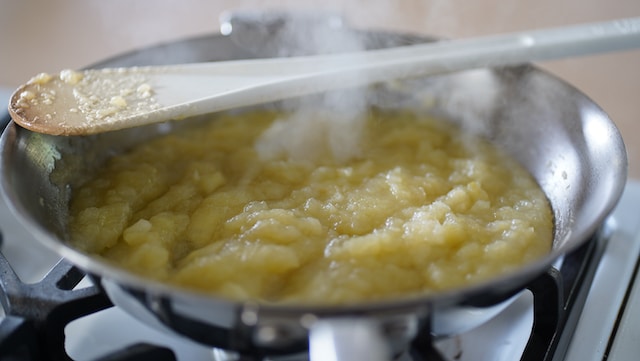Hello, Bruno Albouze here, ready to guide you through the simple yet sublime world of compotes. Often, the most straightforward dishes leave the most lasting impressions, and compote is a prime example. A favorite from breakfast to dessert, this versatile dish can be enjoyed by everyone, regardless of age. Let’s explore how to elevate this humble dish into a culinary masterpiece.
1. Elevating Fruit Compotes: Beyond Apples While apple compote is a classic, let’s not limit our creativity. Summer brings a bounty of fruits like strawberries, apricots, and peaches, perfect for compote. The process is simple: chop the fruits and cook them. Some prefer chunky textures, while others enjoy a smooth puree. But the real magic lies in the spices. Vanilla and cinnamon are traditional, but why not experiment with star anise for strawberries, cloves for peaches, or even saffron and cardamom for apricots? Mix and match fruits for unique combinations – peach and blackberry, strawberry and rhubarb, raspberry, or melon and peach.
2. The Versatility of Steam Cooking: Steam oven can be your best ally here, allowing you to cook different compotes simultaneously. This method also preserves the fruits’ vitamins and minerals. Plus, it’s an excellent tool for sterilizing jars for long-term compote storage.
3. The Essential Step: Sterilization For long-term preservation, hygiene is crucial. Ensure your jars are crack-free and dry. Do not use towels. In steam oven, sterilize jars of the same size for uniform processing. Without a steam oven, use a large pot or a pressure cooker for about ten minutes, fill them with hot compote, and sterilize again for fifteen minutes. Remember to label your jars with the date and store them in a cool, dry place.
4. Daring with Vegetable Compotes Compotes aren’t just for fruits. Vegetable compotes can be an exquisite accompaniment to meats and fish or a topping for bruschetta. Slow cooking is key to achieving a melting texture. A steam oven is perfect for this, requiring 40 to 50 minutes at 194°F/90°C, depending on the vegetable. Imagine serving a red mullet fillet with tomato compote or veal piccata with eggplant compote. For zucchini lovers, enhance it with Italian cheeses like Parmesan or Pecorino.
Whether fruit or vegetable-based, compotes are a delightful treat at any time of the day. They embody the essence of simplicity and versatility in cooking. As a chef, I find joy in bringing new life to traditional recipes, and compotes offer the perfect canvas for culinary creativity. Remember, the beauty of compote lies in its simplicity and the quality of its ingredients. So, embrace the seasons, experiment with flavors, and most importantly, enjoy the process. Bon appétit!

